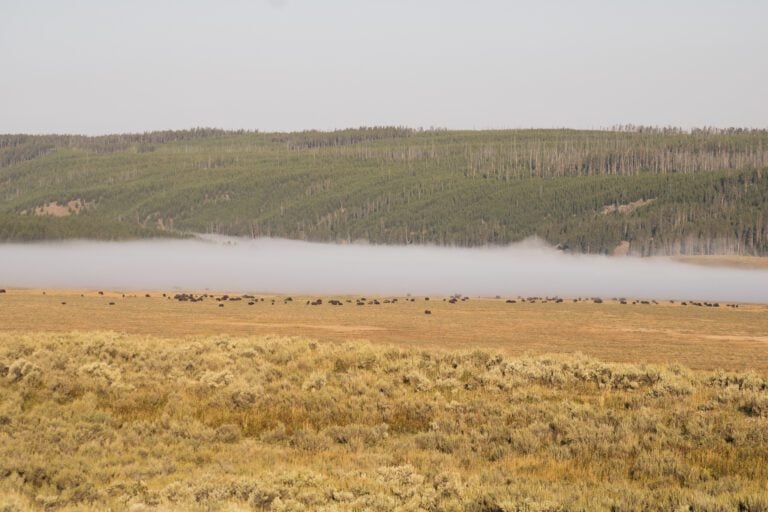This post may contain affiliate links. See our affiliate disclaimer here.
Yellowstone is one of those places that feels impossible to describe until you’re standing there watching a geyser explode or spotting your first wild bison. The park is enormous, full of hot springs, waterfalls, and wildlife, and it takes a little planning to see the highlights.
This 3 day Yellowstone National Park itinerary makes it simple. You’ll visit the most famous sights, get off the beaten path a little, and still have time to slow down and just enjoy being in one of the most incredible places on earth.
Contents
Planning to Visit Yellowstone National Park
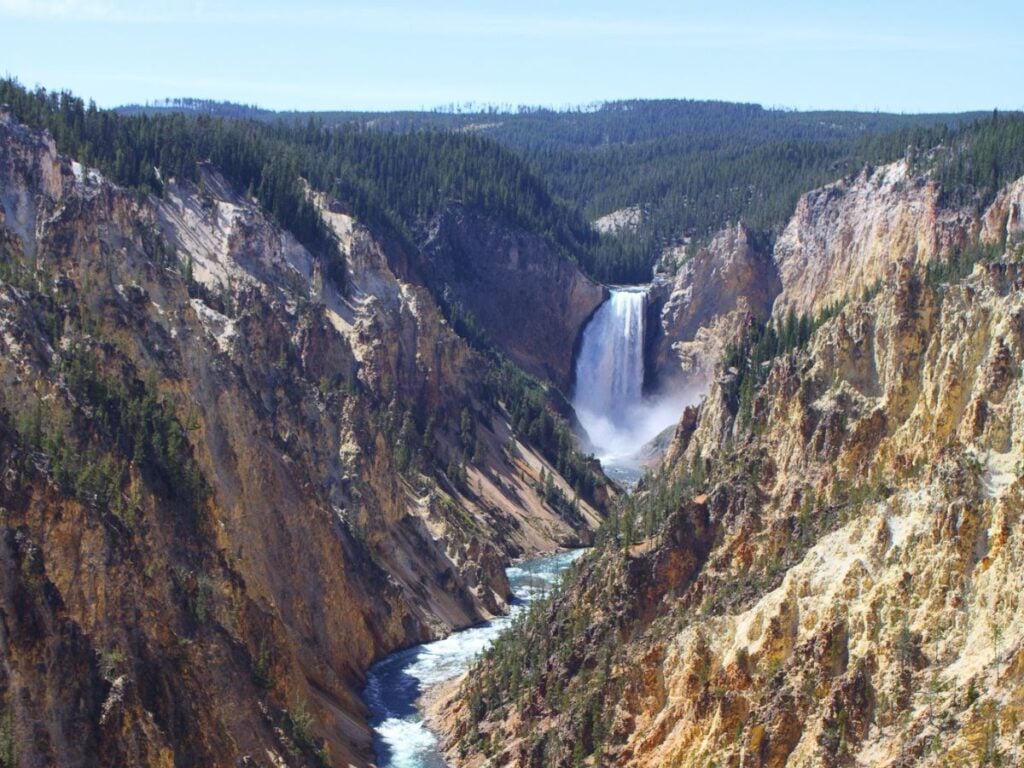
Park Pass
Entrance is $35 per vehicle and valid for seven days. If you already have an America the Beautiful pass, it’s also accepted here.
When to Visit
Yellowstone is open year round, but most people visit between May and October when all the roads are open. Summer brings the best weather and the biggest crowds. If you want fewer people, late May, early June, and September are great choices. Many campgrounds and park roads close by early November and don’t reopen until late April.
Getting Around
Yellowstone has no shuttles or public transportation, so you’ll need your own vehicle. The park’s main roads form a figure eight loop that connects all the major attractions. Plan to drive a lot — it can take a few hours to get from one area to another, especially during wildlife jams.
RV Access
Yellowstone is very RV friendly but you’ll want to plan your driving days carefully. Most roads are paved and well maintained, but parking is tight at popular spots. The best full hookup option inside the park is Fishing Bridge RV Park. Other campgrounds like Madison, Grant Village, and Canyon can fit smaller rigs but have limited amenities. Always check your campground details before booking.
Camping Reservations
Campgrounds fill up months ahead, so make reservations through Recreation.gov or the Yellowstone National Park Lodges website as early as possible. There are also several private RV parks just outside the entrances in West Yellowstone, Gardiner, and Cody.
3 Day Yellowstone National Park Itinerary
Day 1: Geysers and Hot Springs
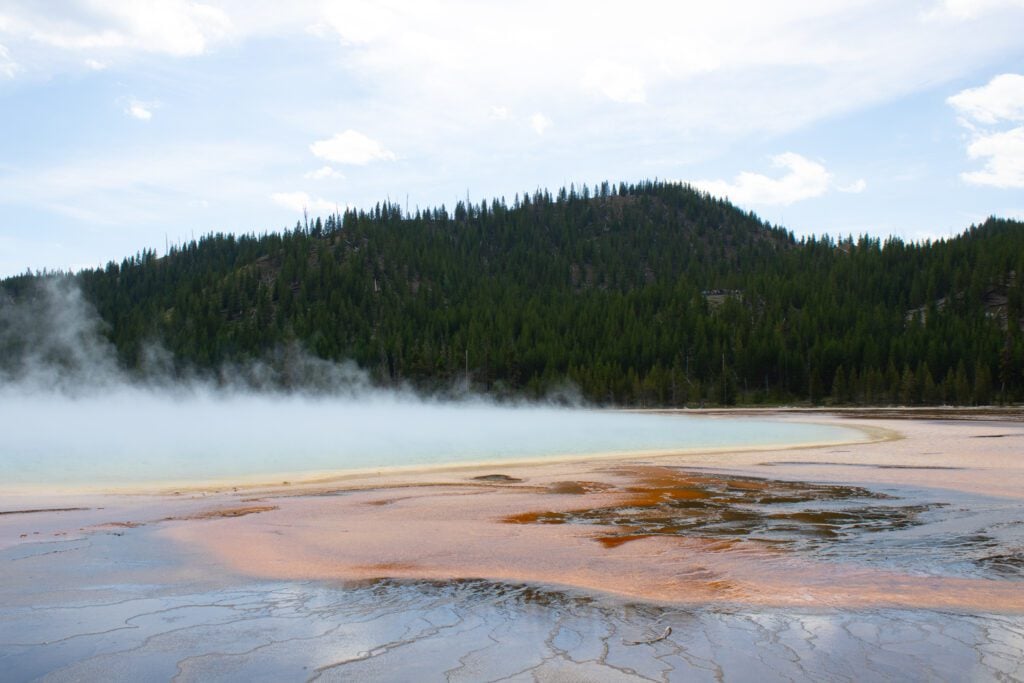
Start your trip in the Old Faithful area, home to some of the most famous geothermal features in the world. Stop first at the Old Faithful Visitor Education Center to check geyser eruption times and grab a map. Watching Old Faithful erupt is a classic Yellowstone experience, and the boardwalks around the Upper Geyser Basin lead you past dozens of other geysers and hot springs.
It’s best to visit Old Faithful early in the morning before 9 a.m., when the crowds start to build. You’ll have an easier time parking, and the boardwalks around the geyser basin are much quieter.
Then, take the easy walk to Morning Glory Pool, a colorful hot spring that’s one of the park’s most photographed spots. If you’re up for a little more walking, continue on the Observation Point Trail for a bird’s eye view of Old Faithful erupting below.
After lunch, drive toward Midway Geyser Basin to see Grand Prismatic Spring, the huge rainbow-colored hot spring you’ve seen in a million photos. The colors are most vivid in the afternoon sun. For the best view, hike the short Fairy Falls Overlook Trail (1.6 miles round trip, easy). The trail climbs gently to a platform that looks down on the spring from above — it’s one of the most stunning views in the park.
Spend your evening in the Old Faithful area or West Yellowstone, depending on where you’re staying. If you’re camping at Fishing Bridge or Madison, you can catch the sunset at Fountain Paint Pot Trail on your way back.
Day 2: Wildlife and Waterfalls
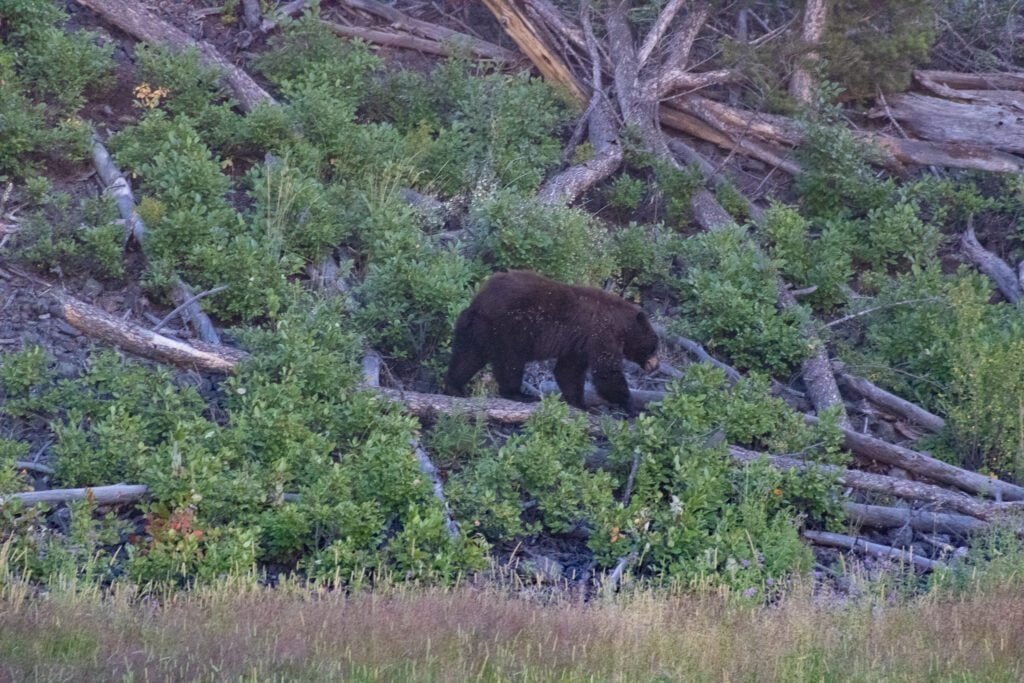
Wake up early and head toward Lamar Valley, one of the best places in the park to see wildlife. You’ll likely spot bison, elk, and maybe even wolves if you’re lucky. The light is beautiful early in the morning, and the valley feels peaceful before the day crowds arrive. Bring binoculars and take your time driving through.
After exploring Lamar Valley, drive toward Tower Fall, a 132 foot waterfall surrounded by steep canyon walls. It’s a short, easy walk from the parking area to the viewpoint.
Continue south toward Canyon Village and the Grand Canyon of the Yellowstone. The North Rim Drive and South Rim Drive both offer pullouts with incredible views of the Upper and Lower Falls. Artist Point is the most famous viewpoint and gives you a classic postcard view of the canyon’s yellow cliffs and rushing river below.
If you want a short hike, take Uncle Tom’s Trail (moderate) to get closer to the Lower Falls, or the Brink of the Lower Falls Trail (steep but short) to stand right above them.
End your day at Hayden Valley, another great wildlife area between Canyon Village and Yellowstone Lake. Evening is prime time for spotting animals, and the golden light over the valley is amazing.
Day 3: Mammoth and the Northern Loop
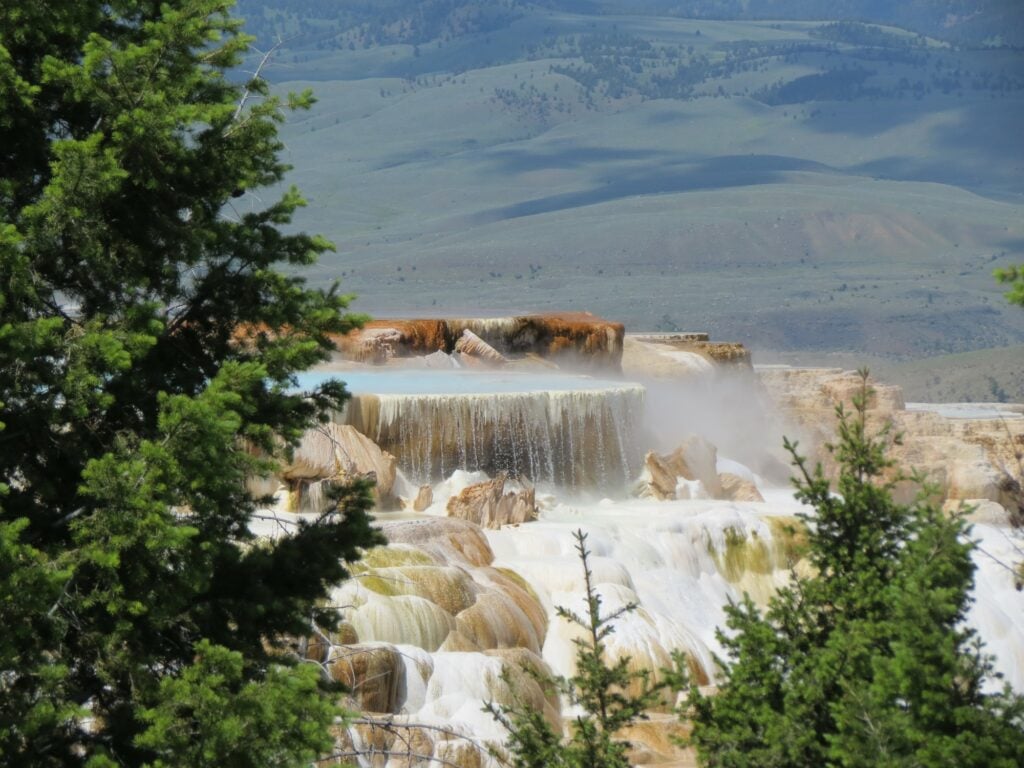
On your last day, explore the northern section of the park. Start at Mammoth Hot Springs, a unique area of cascading white terraces created by mineral deposits. Walk the boardwalks to see the steaming formations up close, and don’t miss Palette Spring and Minerva Terrace.
If you have time, visit the Albright Visitor Center in the historic Fort Yellowstone district to learn about the park’s early days.
Next, take a scenic drive toward Norris Geyser Basin, one of the hottest and most active thermal areas in Yellowstone. Walk the Porcelain Basin Trail loop to see steaming vents and bright turquoise pools.
In the afternoon, make your way south toward Gibbon Falls, a beautiful roadside waterfall with an easy viewpoint. If you’re staying near Madison or West Yellowstone, this is a good place to stop on your way back.
End your trip with one last sunset at Madison Junction or Firehole Lake Drive, where the thermal pools glow in the evening light. It’s a peaceful way to wrap up your Yellowstone adventure.
Where to Stay
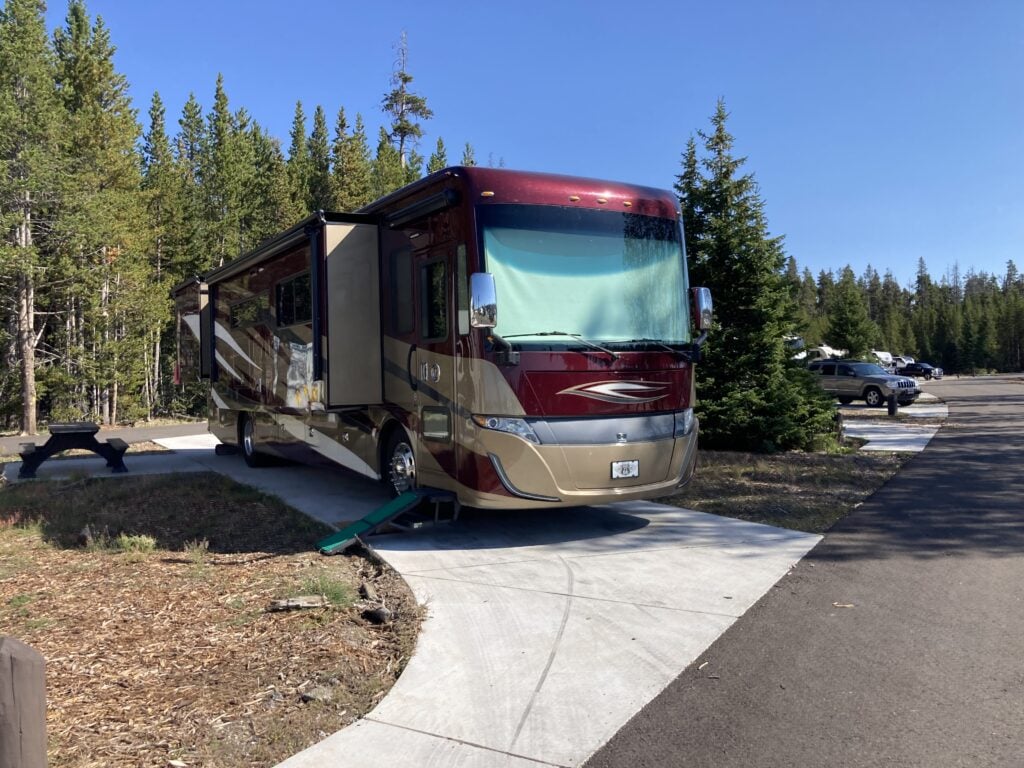
RV Camping Options
- Fishing Bridge RV Park – The only full hookup campground inside the park, centrally located near Yellowstone Lake.
- Madison Campground – Great location between the geyser basins and Canyon area, no hookups but very scenic.
- Canyon Campground – Close to the Grand Canyon of the Yellowstone, shaded sites, and convenient facilities.
We recommend camping in the park to avoid having to deal with long entrance lines each morning. If you are not able to get a reservation inside the park, see our complete guide to Yellowstone campgrounds for more options.
Lodging for Non RV Travelers
- Old Faithful Inn – Iconic log lodge with rustic rooms right next to Old Faithful.
- Canyon Lodge – Modern rooms near the Grand Canyon of the Yellowstone and easy access to both rims.
- Mammoth Hot Springs Hotel – Historic building with comfortable rooms and elk grazing right outside in the evenings.
Final Tips for Visiting Yellowstone
- Start your days early. You’ll avoid traffic and have the best chance to see wildlife.
- Always stay at least 100 yards from bears and wolves, and 25 yards from bison and elk.
- Carry bear spray and know how to use it if you plan to hike.
- Cell service is limited, so download maps and geyser info before entering the park.
- Expect slow driving. Wildlife jams are common and part of the experience.
- Bring layers. Even in summer, mornings and evenings can be chilly.
Happy Travels!
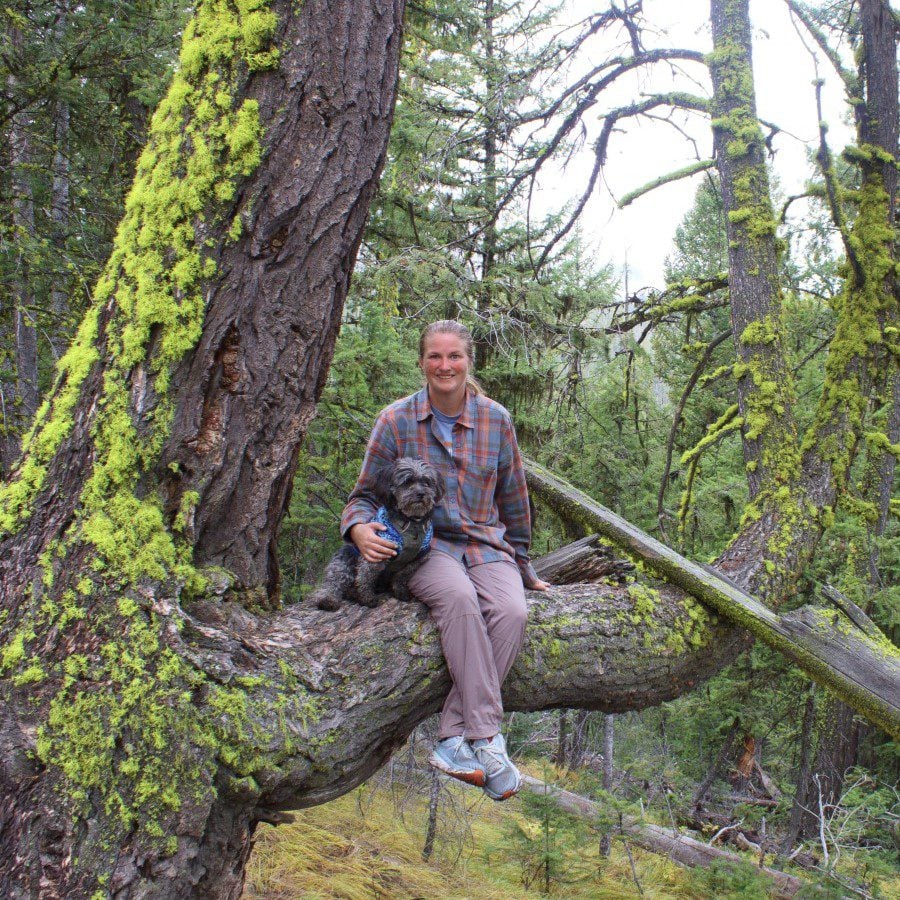
Christina Pate is a seasoned full-time RVer who, along with her husband Justin, has journeyed across the US, Canada, and Mexico. Drawing from her extensive travels, RV repairs and RV renovations, she founded Travels with Ted to guide and inspire fellow RV enthusiasts. Christina is also the co-author of The Owner’s Guide to RV Maintenance and the creator of My RV Log Book.

